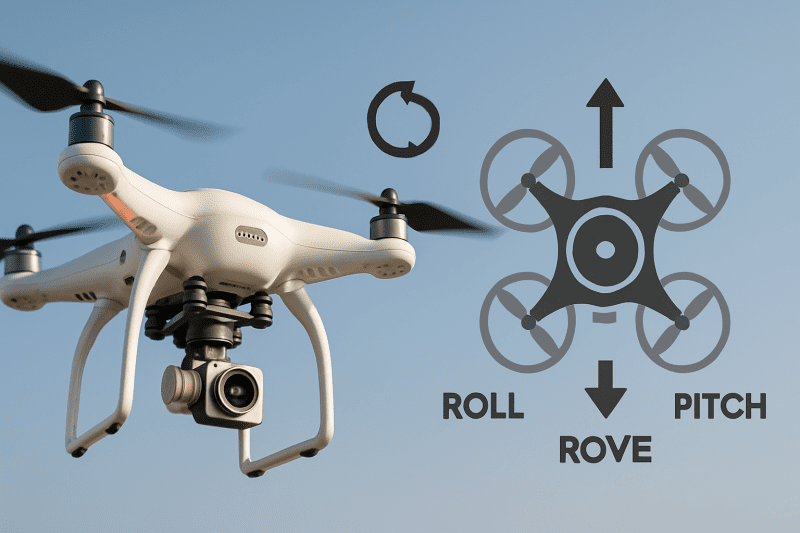How Much Can a Quadcopter Lift?
Ever wondered how much weight a quadcopter or drone can actually lift?
Whether you're into transporting small packages, setting up aerial cameras, or experimenting with a DIY payload test, the lift capacity is a critical spec you need to know before you fly.
In this guide, we break down the science behind quadcopter lifting power, explore typical payload limits on popular models, and offer practical tips for maximizing performance safely.
What Determines a Quadcopter’s Lift Capacity?
1. Propulsion System & Rotor Efficiency
The size and design of rotor blades and the thrust produced by the brushless motors determine how much "thrust" the drone can generate. A racing drone with high-RPM rotors creates lots of lift, but a camera drone with larger propellers at slower RPMs may be more efficient per watt.
2. Power Source: Lipo Batteries
The voltage (e.g., 3S/4S Lipo) and capacity (mAh) of the lipo battery affect both thrust and flight time. More cells mean more voltage and torque, enhancing your ability to hover and climb with a heavy payload.
3. Frame & Airframe Weight
A lightweight carbon-fiber frame (like those on high-end DJI Phantom or Mavic quads) boosts lift-to-weight ratio. For example, if a quad weighs 1 kg and its motors can generate 2 kg of thrust, you have about 1 kg available for a camera or other gear.
4. Flight Controller & Aerodynamics
Stabilization via gyroscope, accelerometer, and real-time control algorithms (the flight controller) help the drone maintain lift even when carrying a heavy load or changing direction.
Example Lift Capacities: From Mini Drones to Professional Quads
| Drone Category | Typical Weight | Approx. Lift Capability |
|---|---|---|
| Mini drone | ~250 g | 50–100 g payload |
| Camera drone | 500–900 g | 200–400 g payload |
| Prosumer quadcopter | 1.2–2 kg | 500–800 g payload |
| Heavy-lift UAV | 3–7 kg | 1–3 kg payload or more |
-
A nano drone or micro FPV quadrotor (e.g., Hubsan X4) can lift small action cameras or lightweight sensors.
-
DJI Mavic or Autel mid-size quads can handle compact mirrorless cameras (~300 g).
-
Larger rigs built for professional filming or package carry are often custom setups using hexacopters or octocopters with multiple rotors.
Useful Concept: The 50% Rule
As a rule of thumb, a typical quadcopter should aim to lift approximately 50% of its own weight to retain maneuverability, stable hover, and safe takeoff and landing.
For example, a 1.5 kg quad designed to carry a camera drone plus gimbal might only safely lift 750 g of payload.
Practical Tips to Maximize Lift
-
Minimize Onboard Weight
Remove flight gear you don’t need. Heavy landing gear, extra batteries, or redundant attachments reduce your real payload. -
Upgrade Props & Motors
Switching to larger or more efficient propellers and higher-thrust brushless motors can boost lift capacity. -
Adjust Battery Configuration
Balancing between battery flight time and overall weight, use higher-capacity lithium polymer packs while monitoring power-to-weight ratio. -
Test Hover in Place
Perform a hover test before adding extra gear or payloads. Monitor thrust and battery discharge rate. -
Respect Airspace & Regulations
Heavier or modified drones may require FAA registration or even a Part 107 license, depending on local airspace rules and whether you're carrying commercial payloads.
Safety & Operational Considerations
-
Center of Gravity matters. Mount your payload under the gimbal so it doesn’t destabilize pitch or yaw.
-
Avoid crashes—an overloaded quad is slower to respond and risks failure near the ground.
-
Flight controller calibration (including gyro and accelerometer) ensures consistent lift even under changing loads.
-
Autopilot systems in some camera drones offer altitude hold and position correction to accommodate fluctuating weight.
Final Thoughts: Matching Payload to Purpose
-
Want to fly a drone with just a selfie stick camera? A mini quad or drone under 500 g has plenty of lift.
-
Planning to do aerial videography or mount a mirrorless rig with gimbal? A professional camera drone with a 2+ kg frame and ability to carry 500–800 g payload is ideal.
-
Need to survey or drop packages? Invest in a larger multirotor—or move to hexacopters and octocopters.
The key is balancing your equipment, mission goals, and safety regulations. Start small, test thoroughly, and build up.
Happy and responsible flying!



